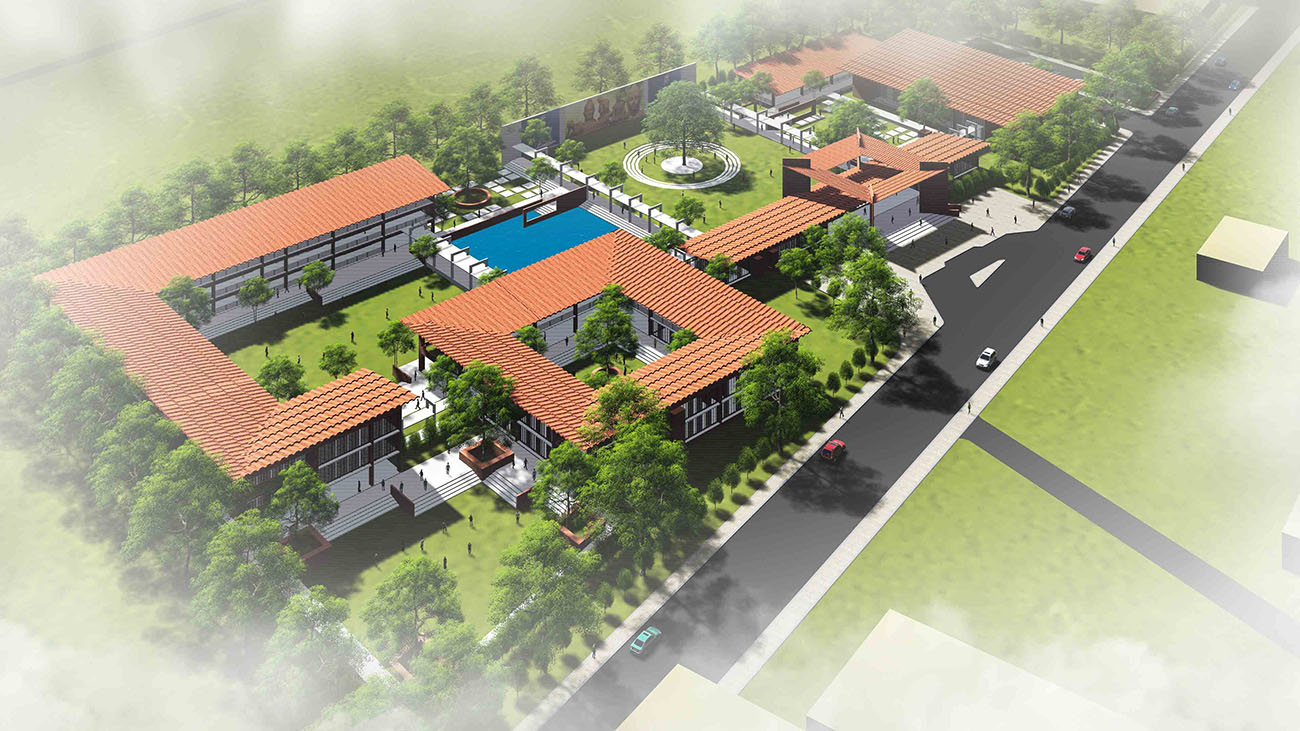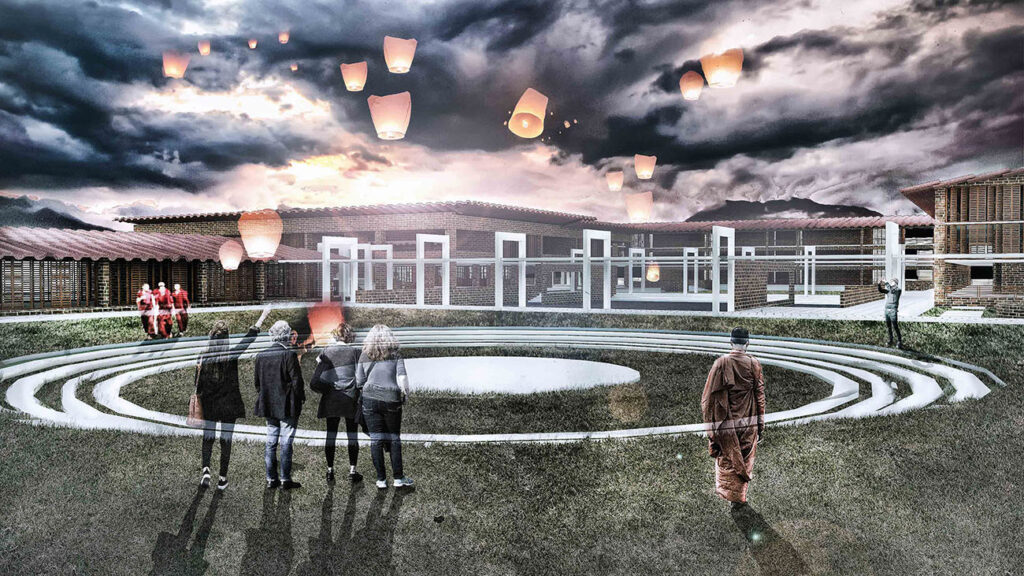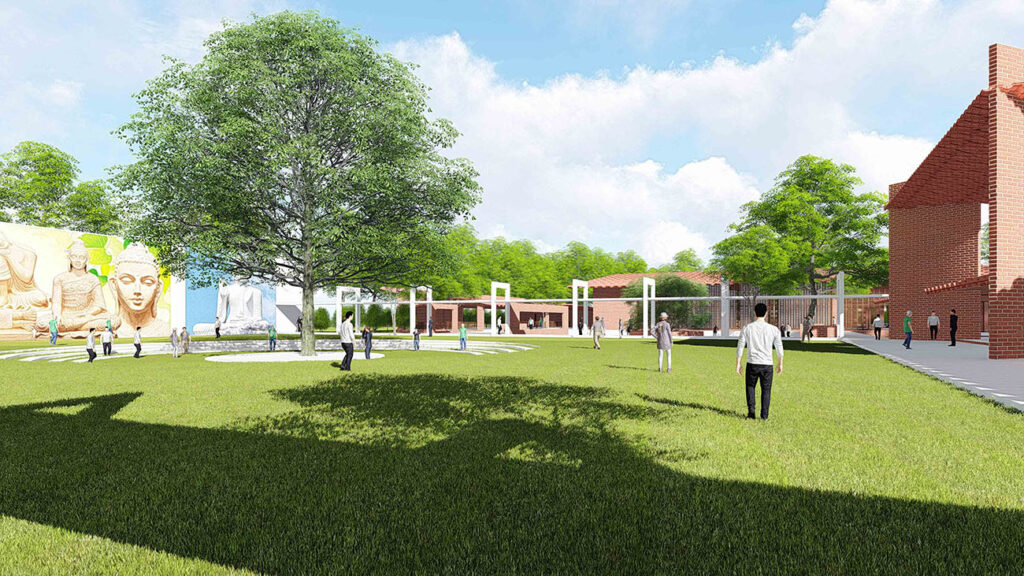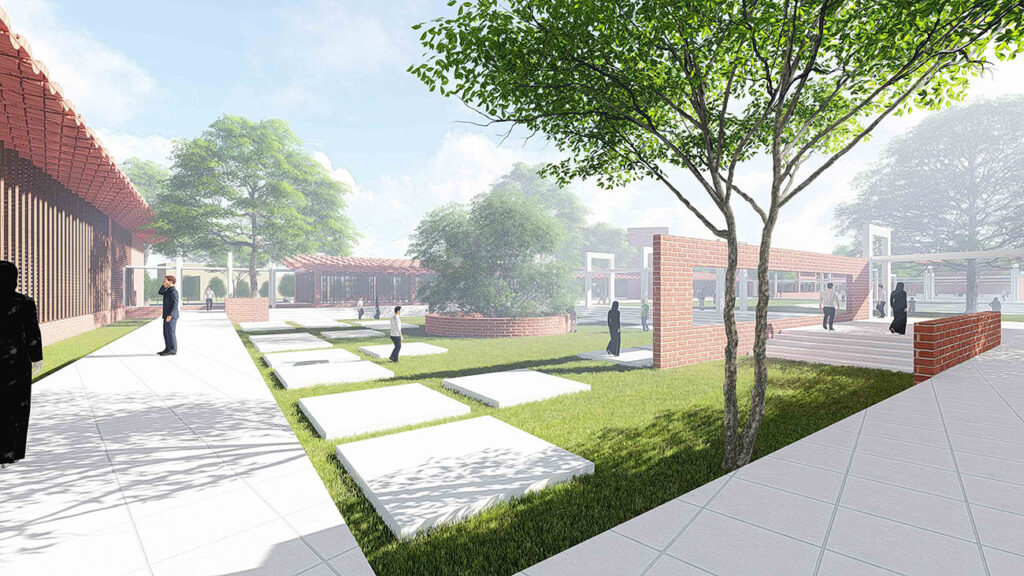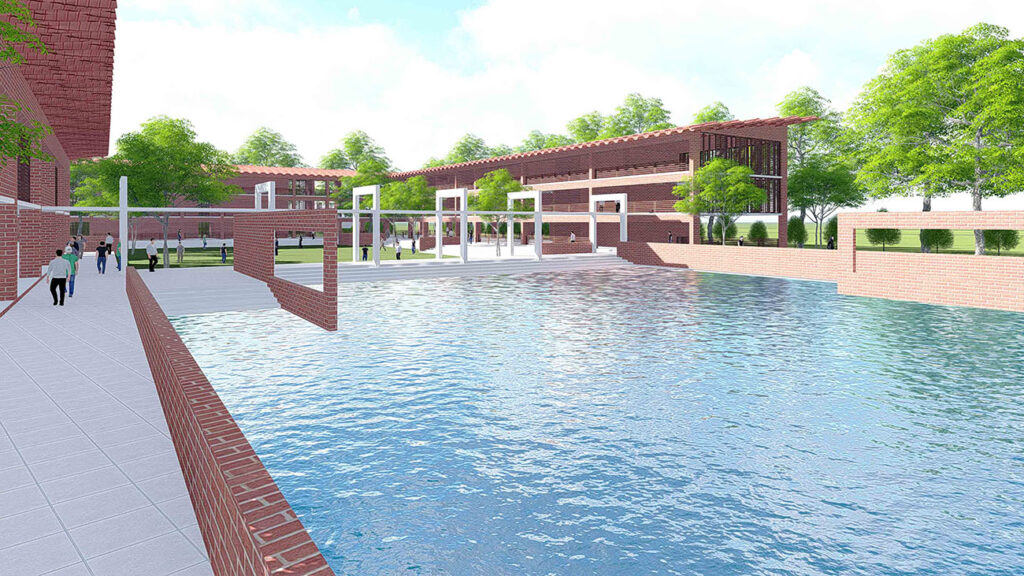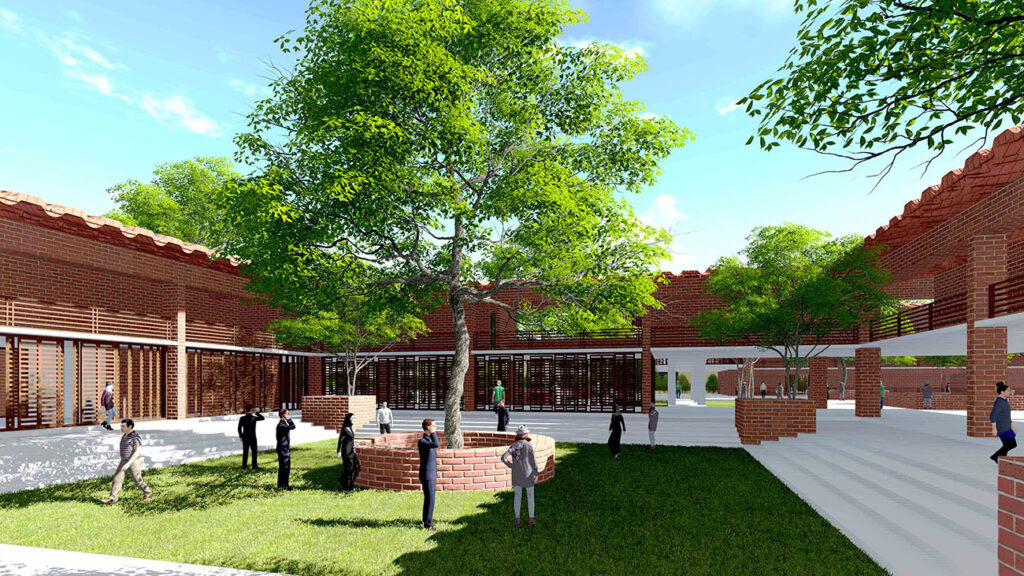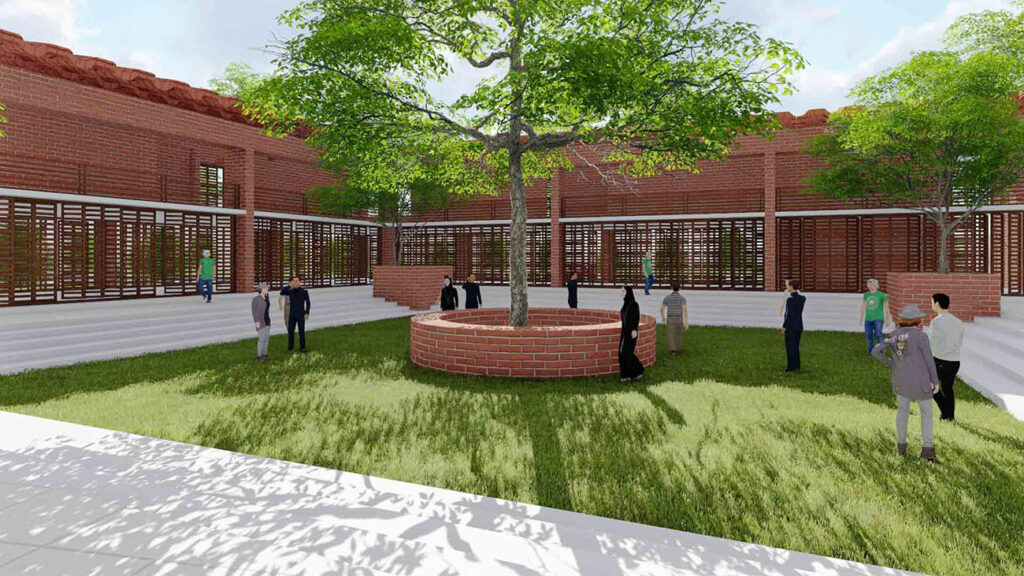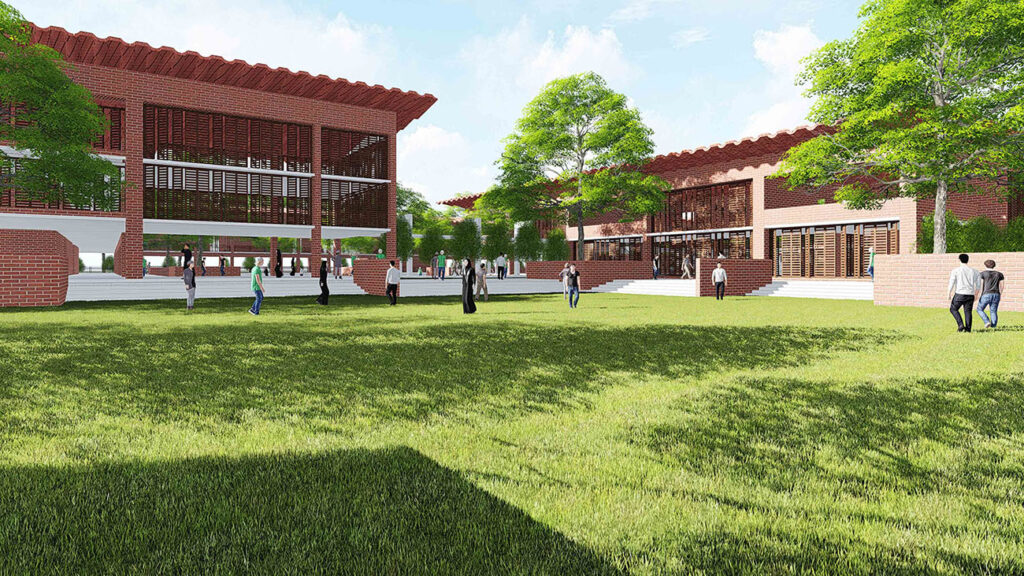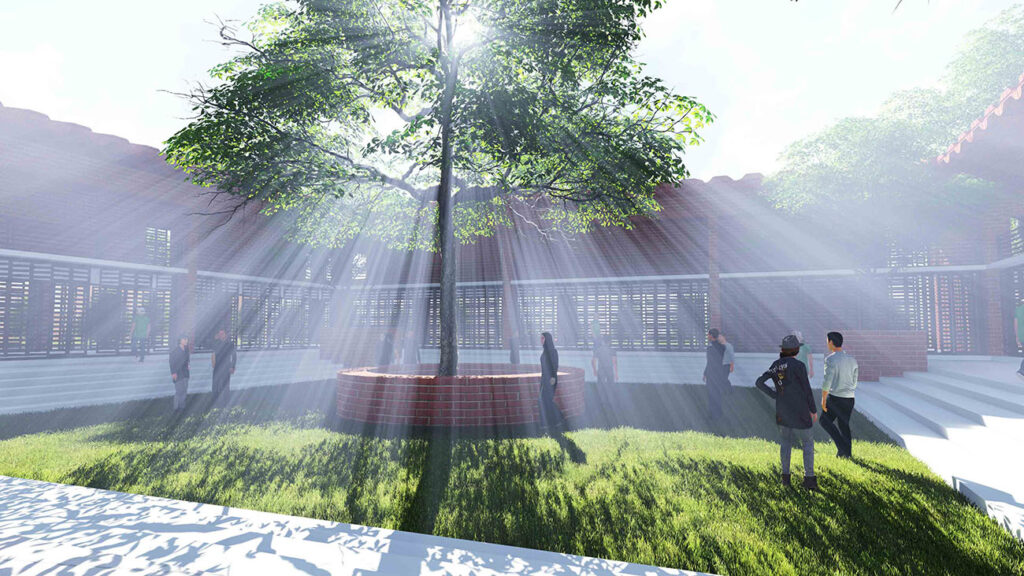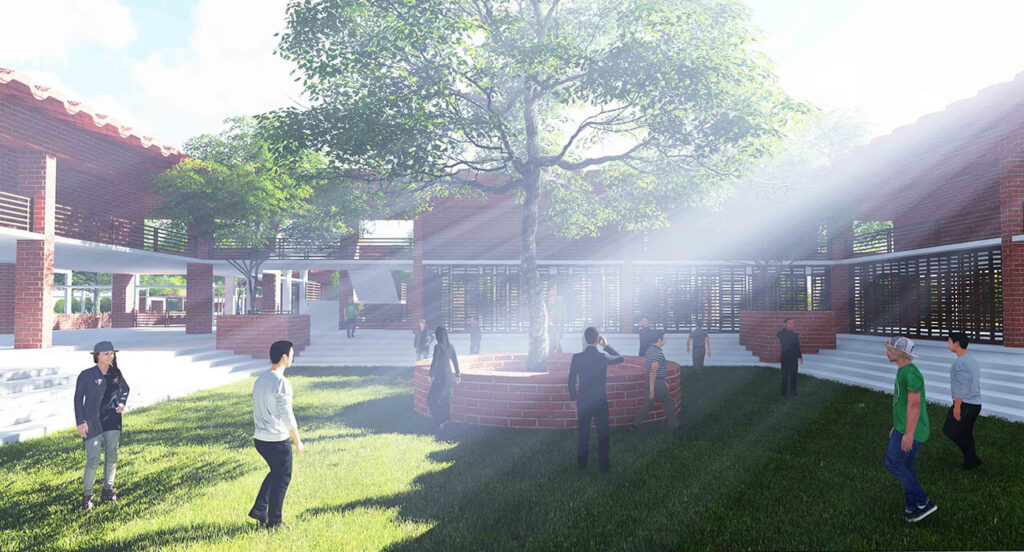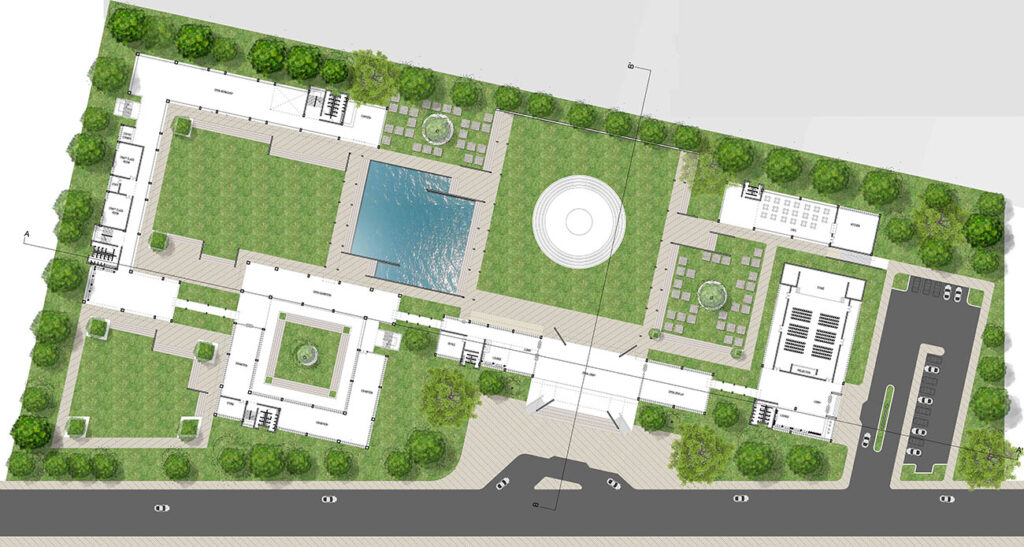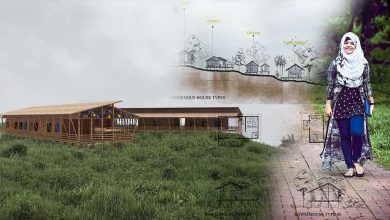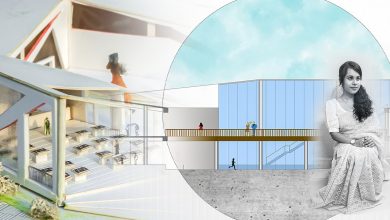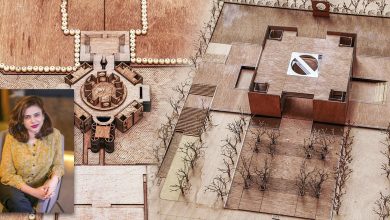RAKHINE CULTURAL COMPLEX AT KUAKATA
Rakhine is one of the most distinctive indigenous communities living in Bangladesh. They have been living in Cox’s Bazar, Patuakhali and Barguna districts since the 18th century after fleeing from their homeland of Arakan region of Myanmar. They are known to be one of the first ethnic peoples of Southeast Asia to accept the teachings of Buddha as their way of life. Though their numbers are declining, their beautiful cultures add diversity to the culture of the country.
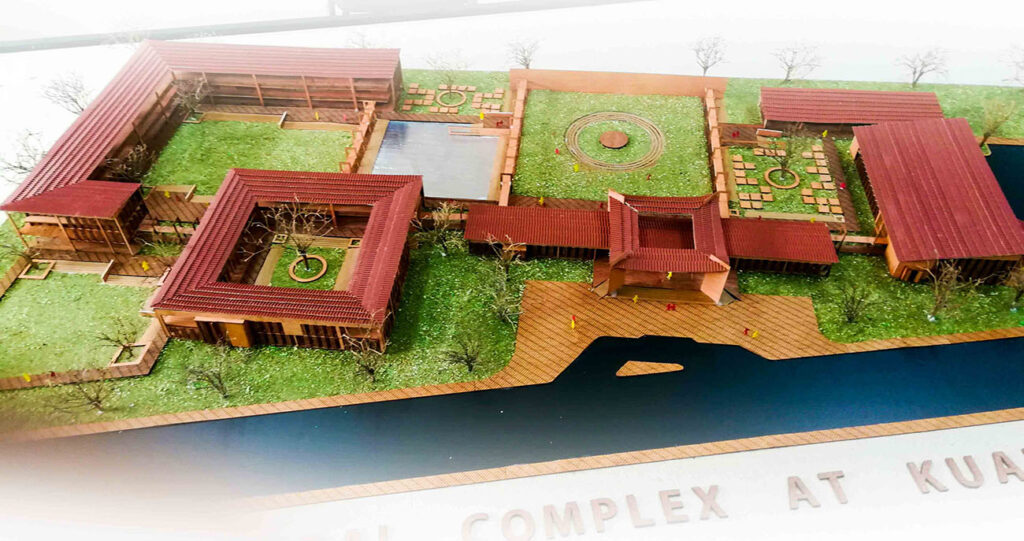
As the Rakhine community is the follower of Gautam Buddha, they observe every Buddhist festival with solemn dignity. The Rakhine music, cuisine, various plays during the festivals and the Kyin wrestling is part of the heritage of Southeast Asia and the world at large. But due to the decreasing number and lack of open space to conduct the festivals, Rakhine culture is losing its existence. An amphitheatre design proposal for the preservation of the traditional Rakhine culture can be a solution to this conundrum. This design proposal is proposed and designed by Bejury Ansary, a student at Stamford University.
The concept of the project is to share the Rakhine culture to the other cultural groups and creating a learning field which will allow them to know about other culture as well and to create an international platform of sharing and learning diversified cultures.
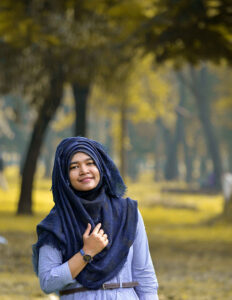
Historical sources indicate fleeing Rakhines first landed in the shores of Patuakhali district. The only remaining Buddhist temple of the Rakhine people is situated at Patuakhali, therefore, the location of the amphitheatre cum cultural centre is chosen near Kuakata beach, Patuakhali. Form of the project is developed by the functional analysis of Rakhine community from their daily life to their style of celebrating festivals. While the solid void rationale of different functions gives different dimensions to the form. The cultural centre coupled with the scenic view of the seashore acts as a tourism hub.


